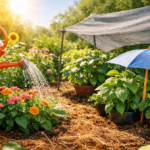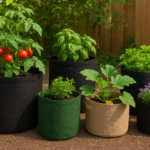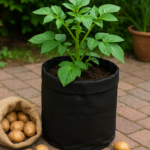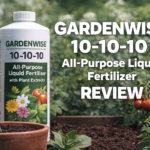Philodendrons are renowned for their lush, vibrant foliage and easy-care nature, making them a favorite among houseplant enthusiasts. Among the many varieties, Philodendron Splendid and Philodendron Melanochrysum stand out for their striking appearance and unique characteristics. Philodendron Splendid, a hybrid of Philodendron Verrucosum and Philodendron Melanochrysum, boasts large, velvety leaves with deep green hues and pronounced veins. On the other hand, Philodendron Melanochrysum, known for its dark, soft leaves with golden veins, exudes an exotic charm. Both plants originate from tropical rainforests and thrive in humid, shaded environments.
In this article, we will explore the differences and similarities between these two captivating houseplants, providing essential care tips and insights to help you decide which one is the perfect addition to your indoor garden. Whether you’re a seasoned plant parent or a novice, understanding these plants will enhance your gardening experience.
Importance of Philodendrons in Houseplant Collections
Philodendrons hold a special place in houseplant collections for several reasons. Their diverse and vibrant foliage adds an aesthetic appeal that enhances any indoor space. With varieties ranging from heart-shaped leaves to deeply lobed or velvety textures, they offer something for every plant lover’s taste.
Beyond their beauty, philodendrons are relatively easy to care for, making them ideal for novice and experienced gardeners. They are adaptable to various indoor conditions and are forgiving of occasional neglect, which is perfect for those with busy lifestyles. Their ability to purify the air by removing toxins like formaldehyde and benzene further underscores their value, contributing to a healthier living environment.
Philodendrons also hold sentimental value for many, often passed down through generations as treasured heirlooms. Their resilience and longevity symbolize growth and continuity, making them more than just decorative pieces but cherished companions in the home.
What is a Philodendron Splendid?

Origin and Natural Habitat
Philodendron Splendid is a hybrid plant created by crossing Philodendron Verrucosum and Philodendron Melanochrysum. This beautiful plant originates from the tropical rainforests of South America, where it thrives in humid, shaded environments.
Physical Characteristics
Philodendron Splendid is known for its large, velvety leaves that can grow up to 2 feet long. The heart-shaped leaves are deep green with pronounced veins and can appear almost black under certain lighting conditions. When new leaves emerge, they often have a reddish tint before maturing into their signature deep green color.
Growth Requirements
Philodendron Splendid needs bright, indirect light, high humidity, and well-draining soil to thrive. As a climbing plant, it benefits from support such as a moss pole or trellis. Regular watering is essential, but the soil should never be waterlogged. Occasional misting can help maintain the high humidity levels that this plant loves.
What is Philodendron Melanochrysum?

Origin and Natural Habitat
Philodendron Melanochrysum, also known as the Black Gold Philodendron, is native to the tropical rainforests of Colombia. It is accustomed to warm, humid climates with plenty of indirect sunlight.
Physical Characteristics
This plant is prized for its dark, velvety leaves with striking golden veins. The leaves can grow quite large, sometimes reaching over 2 feet long. The new leaves often start as a light bronze before developing their characteristic dark green hue with a velvety texture.
Growth Requirements
Philodendron Melanochrysum thrives in bright, indirect light and high humidity, similar to its hybrid counterpart. It prefers well-draining, nutrient-rich soil and regular watering, ensuring the soil remains moist but not soggy. Like Philodendron Splendid, it benefits from a support structure that can climb as it grows. Maintaining high humidity through misting or a humidifier can help this plant flourish indoors.
Differences Between Philodendron Splendid and Melanochrysum
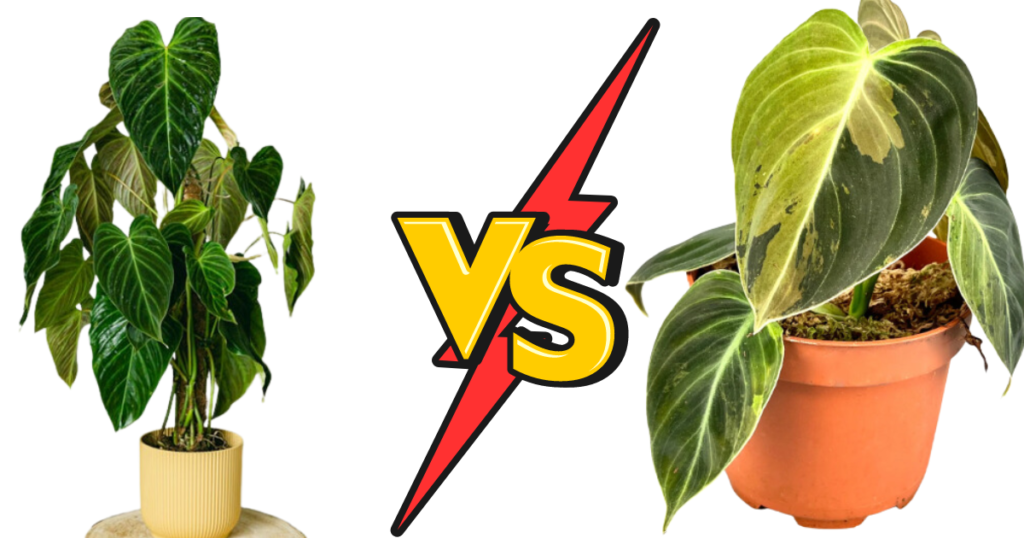
Both Philodendron Splendid and Philodendron Melanochrysum are stunning plants, but they have distinct characteristics that set them apart. Let’s explore these differences in detail.
Leaf Shape and Size
Details: Philodendron Splendid has broad, heart-shaped leaves quite large, often reaching up to 2 feet. In contrast, Philodendron Melanochrysum features elongated, heart-shaped leaves that can grow even longer, usually exceeding 2 feet.
Color and Texture
Details: Philodendron Splendid’s leaves are deep green with pronounced veins and often have a reddish tint when young. The velvety texture adds to their appeal. On the other hand, Philodendron Melanochrysum boasts dark green leaves with striking golden veins, giving it a distinctive, luxurious look. Its leaves also have a velvety texture with a noticeable golden sheen.
Growth Patterns
Details: Both Philodendron Splendid and Melanochrysum are climbing plants that require support structures like moss poles or trellises to thrive. Their growth speed is moderate to fast under optimal conditions. While their growth habits are similar, their distinct leaf characteristics set them apart visually.
Similarities Between Philodendron Splendid and Melanochrysum
Philodendron Splendid and Philodendron Melanochrysum share similarities that make them desirable and relatively easy to care for. Let’s explore these similarities in detail.
Basic Care Requirements
Philodendron Splendid and Melanochrysum have similar care requirements, making them ideal for indoor cultivation.
- Light Requirements: Both plants thrive in bright, indirect light. Direct sunlight can scorch their leaves, while low light conditions can slow their growth and dull their vibrant colors.
- Watering Needs: These philodendrons prefer consistently moist soil but are sensitive to overwatering. Water them when the top inch of the soil feels dry, ensuring the pot has good drainage to prevent root rot.
- Soil Preferences: Both plants need a well-draining, nutrient-rich soil mix. A mix containing peat, perlite, and orchid bark balances moisture retention and aeration well.
- Humidity and Temperature: Both plants thrive in high-humidity environments and prefer temperatures between 65-80°F (18-27°C). Regular misting or using a humidifier can help maintain the necessary humidity levels.
Common Pests and Diseases
Philodendron Splendid and Melanochrysum are susceptible to similar pests and diseases, which can be managed properly.
- Pests:
- Spider Mites: These tiny pests can cause yellowing and stippling on leaves. Regularly inspect the underside of leaves and use insecticidal soap or neem oil to treat infestations.
- Mealybugs: Mealybugs appear as white, cottony masses on leaves and stems. They can be removed with a cotton swab dipped in rubbing alcohol or treated with insecticidal soap.
- Aphids: These small, green insects can cluster on new growth. Use insecticidal soap or a strong water spray to dislodge them.
- Diseases:
- Root Rot: Overwatering and poor drainage can lead to root rot, characterized by yellowing leaves and a mushy stem base. To prevent this, ensure the soil dries out between waterings and the pot has adequate drainage.
- Leaf Spot: Fungal infections can cause brown or black spots on leaves. Remove affected leaves and improve air circulation around the plant to prevent spread.
- Bacterial Blight: This disease causes dark, water-soaked lesions on leaves. Remove infected leaves and avoid overhead watering to reduce the risk.
Which is Easier to Care For: Philodendron Splendid or Melanochrysum?
When it comes to choosing between Philodendron Splendid and Philodendron Melanochrysum, ease of care is an important consideration. Both plants are relatively easy to care for, but subtle differences might make one a better choice for you based on your lifestyle and experience level.
Philodendron Splendid

Philodendron Splendid, a hybrid of Philodendron Verrucosum and Philodendron Melanochrysum, tends to inherit some hardier traits from its parent plants. Here’s why it might be easier to care for:
- Hardiness: Splendid is known for being resilient, which makes it more forgiving of occasional care lapses, such as missed waterings or minor humidity fluctuations.
- Growth Rate: It has a moderate to fast growth rate, meaning you’ll see quicker results, which can be rewarding and motivating for new plant parents.
- Pest Resistance: While it can still attract pests like spider mites or mealybugs, its hybrid nature can sometimes make it slightly less susceptible than its parent plants.
Philodendron Melanochrysum

Philodendron Melanochrysum is known for its striking appearance and luxurious leaves, but it can be a bit more particular about its care requirements:
- Humidity Needs: Melanochrysum demands consistently high humidity levels to thrive. If you live in a dry climate or don’t use a humidifier, this plant might struggle more than the Splendid.
- Light Sensitivity: This plant prefers bright, indirect light but can be more sensitive to direct sunlight, which can cause leaf burn. Ensuring the right lighting conditions is crucial.
- Pest Susceptibility: Its velvety leaves can attract pests more efficiently, and maintaining pest-free foliage requires regular inspection and treatment.
Which Philodendron is Safe for Your Pets?
When choosing houseplants, pet safety is a crucial consideration. Unfortunately, neither Philodendron Splendid nor Philodendron Melanochrysum is safe for pets. Here’s what you need to know:
Philodendron Splendid
Philodendron Splendid, like many philodendrons, contains calcium oxalate crystals. These crystals can cause irritation and swelling if ingested by pets, leading to symptoms such as:
- Drooling
- Oral pain
- Vomiting
- Difficulty swallowing
Philodendron Melanochrysum
Philodendron Melanochrysum also contains calcium oxalate crystals, posing risks similar to those for pets. Ingestion can result in:
- Oral irritation
- Excessive drooling
- Vomiting
- Difficulty swallowing
Pet Safety Tips
- Placement: Keep these plants out of reach of pets. Consider placing them on high shelves or using hanging planters.
- Training: Train your pets to avoid plants. Use deterrents like citrus sprays or place objects around the plants to discourage pets from approaching.
- Alternative Plants: If pet safety is a primary concern, consider pet-safe houseplants such as spider plants, Boston ferns, or certain types of palms, such as the areca palm.
Both Philodendron Splendid and Philodendron Melanochrysum are toxic to pets. If you have curious pets prone to chewing on plants, it’s best to either avoid these philodendrons or take measures to ensure they are kept well out of reach. For a pet-friendly home, choosing non-toxic plants is the safest option.
Which Philodendron is Right for Your Home?
Choosing between Philodendron Splendid and Philodendron Melanochrysum depends on several factors, including your home environment, care preferences, and aesthetic tastes. Here’s a guide to help you decide which is suitable for your home.
Assess Your Space
- Room Size: If you have ample space, both Philodendron Splendens and Melanochrysum are excellent choices as they can grow large and lush. However, if you’re working with a smaller space, consider how much room you can dedicate to the plant’s mature size.
- Light Availability: Both plants thrive in bright, indirect light. If your home has large windows with filtered sunlight, either plant would suit. You should use grow lights for spaces with lower light to ensure they receive adequate illumination.
- Humidity Levels: These philodendrons love humidity. If you live in a dry climate or have indoor heating that reduces humidity, you might need a humidifier to keep the plants healthy. Regular misting can also help maintain the necessary moisture levels.
Consider Your Care Routine
- Maintenance Needs: Philodendron Splendid and Melanochrysum both require consistent care. They need regular watering, high humidity, and occasional fertilizing. If you have a busy lifestyle and forget to water frequently, you may need to set reminders or choose a plant with lower maintenance needs.
- Experience Level: Both plants are relatively easy for intermediate plant parents. If you’re a beginner, you might find their care requirements challenging but manageable with some research and attention.
- Support Structures: These climbing plants benefit from support like moss poles. Ensure you provide these structures to allow your philodendron to climb and grow properly.
Match Your Aesthetic Preferences
- Leaf Characteristics: If you prefer large, heart-shaped leaves with a velvety texture and occasional reddish undertones, Philodendron Splendid is your plant. If you’re drawn to elongated, dark green leaves with striking golden veins and a luxurious appearance, then Philodendron Melanochrysum will be a better fit.
- Décor Compatibility: Consider how each plant’s unique foliage will blend with your home decor. Both add a touch of tropical elegance, but their distinct leaf patterns might better complement different styles or color schemes.
Ideal Growing Conditions for Philodendron Splendid and Melanochrysum
Philodendron Splendens and Philodendron Melanochrysum thrive under similar growing conditions. Here’s a detailed guide to creating the perfect environment for these stunning plants.
Light Requirements
Both Philodendron Splendid and Melanochrysum prefer bright, indirect light. Direct sunlight can scorch their delicate leaves, while too little light can slow their growth and diminish their vibrant colors. Place them near a window with filtered light or use sheer curtains to diffuse the sunlight. Artificial grow lights can also supplement natural light, especially in darker rooms or during the winter months.
Watering Needs
Maintaining the proper moisture level is crucial for both plants. Here are some watering tips:
- Consistency: Water regularly to keep the soil consistently moist but not soggy. Overwatering can lead to root rot, while underwatering can cause the leaves to wilt.
- Check Soil: Before watering, check the top inch of soil. If it feels dry, it’s time to water. Ensure excess water can drain away to prevent waterlogging.
- Water Quality: Use room-temperature, filtered water to avoid shocking the roots with cold water or chemicals.
Soil Preferences
Both philodendrons thrive in well-draining, nutrient-rich soil. A suitable mix includes:
- Peat Moss: Retains moisture without becoming waterlogged.
- Perlite or Vermiculite: Enhances drainage and aeration.
- Orchid Bark: Adds structure and aids in root aeration.
This combination provides the ideal balance of moisture retention and drainage.
Humidity and Temperature
High humidity and warm temperatures mimic their natural tropical environment:
- Humidity: Both plants prefer humidity levels above 60%. To increase humidity, use a humidifier, mist the leaves regularly, or place the pot on a tray filled with water and pebbles.
- Temperature: Ideal temperatures range between 65-80°F (18-27°C). Avoid placing the plants near drafts, air conditioners, or heaters, as sudden temperature changes can stress them.
Propagation Techniques
Propagation is an excellent way to multiply your plants. Here are two effective methods for Philodendron Splendid and Melanochrysum.
Stem Cuttings
- Select a Healthy Stem: Choose a healthy stem with at least one node and a few leaves.
- Cut Below a Node: Cut just below a node using clean, sharp scissors.
- Prepare the Cutting: Remove the lower leaves, leaving a few at the top.
- Rooting Medium: Place the cutting in water or a moist soil mix (a mix of peat and perlite works well).
- Maintain Conditions: Keep the cutting in bright, indirect light and maintain high humidity. If rooting in water, change the water regularly.
- Wait for Roots: Roots should develop in a few weeks. Once they are a few inches long, you can transplant the cutting into the soil.
Air Layering
- Choose a Stem: Select a healthy, mature stem.
- Make a Cut: Make a small, diagonal cut about halfway through the stem, just below a node.
- Insert a Toothpick: Insert a toothpick into the cut to keep it open.
- Apply Rooting Hormone: To encourage root growth, apply rooting hormone to the cut.
- Wrap with Moss: Wrap the cut area with moist sphagnum moss.
- Cover with Plastic: Cover the moss with plastic wrap and secure it with ties to retain moisture.
- Wait for Roots: Roots should begin to form in a few weeks. Once a sound root system has developed, cut the stem below the new roots and plant it in the soil.
Tips for Successful Propagation
- Clean Tools: Always use sharp tools to cut cuts to prevent infections.
- Healthy Parent Plant: Ensure the parent plant is healthy and free from pests or diseases before taking cuttings.
- Optimal Conditions: Maintain optimal light, humidity, and temperature conditions to encourage successful rooting.
- Patience: Be patient and avoid disturbing the cuttings too often. Root development can take several weeks.
Common Issues and Troubleshooting for Philodendrons
Yellowing Leaves
Several factors can cause yellowing leaves on Philodendron Splendid and Melanochrysum:
- The most common cause is overwatering. Ensure the soil is well-draining and allow the top inch to dry before watering again.
- Underwatering: If the soil is too dry, leaves may turn yellow. Maintain consistent moisture.
- Nutrient Deficiency: Lack of essential nutrients can cause yellowing. Use a balanced fertilizer every 4-6 weeks during the growing season.
- Light Conditions: Both too much and too little light can cause yellowing. Ensure they receive bright, indirect light.
Root Rot
Root rot is a severe issue often caused by overwatering or poor drainage:
- Symptoms: Wilting, yellowing leaves, and mushy roots.
- Solution: Remove the plant from the pot, trim away affected roots, and repot in fresh, well-draining soil. Reduce watering and ensure proper drainage.
Pest Infestations
Common pests include spider mites, mealybugs, and aphids:
- Spider Mites: Tiny, causing yellow stippling on leaves. Treat with insecticidal soap or neem oil.
- Mealybugs: White, cotton-like masses on leaves. Remove with a cotton swab dipped in alcohol or use insecticidal soap.
- Aphids: Small, green insects on new growth. Spray with a strong stream of water or treat with insecticidal soap.
Decorating with Philodendrons
Philodendron Splendid and Melanochrysum’s lush, vibrant foliage can enhance indoor décor. Here are some creative ways to display them.
Indoor Placement Ideas
- Living Room: Place them near a bright window but out of direct sunlight to create a tropical focal point.
- Bedroom: Enhance air quality and add a calming touch by placing them on a bedside table or dresser.
- Bathroom: High humidity makes bathrooms ideal. Position them on a shelf or hanging planter.
Pairing with Other Plants
- Contrasting Foliage: Pair with plants with contrasting leaf shapes and colors, such as snake plants or clothes, to create visual interest.
- Height Variety: Combine with plants of varying heights, like ferns and pothos, to add depth and dimension to your plant display.
Creative Display Options
- Hanging Baskets/ hanging planter: Use hanging baskets to save floor space and create a cascading effect with the philodendron’s vines.
- Moss Poles: Provide support and encourage upward growth, making a stunning vertical display.
- Terrariums: For smaller philodendrons, use terrariums to create a humid micro-environment and a stylish décor piece.
FAQ
How often should I water these plants?
Water both Philodendron Splendid and Melanochrysum when the top inch of the soil feels dry. Ensure the soil remains consistently moist but not waterlogged. Adjust your watering frequency based on the season and indoor humidity levels.
Can these plants be grown outdoors?
Philodendron Splendid and Melanochrysum can be grown outdoors in tropical or subtropical climates where temperatures stay consistently above 65°F (18°C). They prefer shaded areas with high humidity. In cooler climates, they should be kept indoors or brought inside during colder months.
What are the signs of overwatering?
Signs of overwatering include yellowing leaves, a mushy stem base, and root rot. Ensure your pot has good drainage and allow the top inch of soil to dry out between waterings to prevent overwatering.
How can I increase the humidity for my philodendrons?
You can increase humidity by using a humidifier, placing a water tray with pebbles under the plant, or misting the leaves regularly. Grouping plants can also help create a more humid microenvironment.
What type of fertilizer should I use for these plants?
Use a balanced, water-soluble fertilizer diluted to half strength every 4-6 weeks during the growing season (spring and summer). Avoid over-fertilizing, as this can cause leaf burn and other issues.
How do I know if my philodendron is getting too much light?
If your philodendron is getting too much light, you may notice leaf burn, which appears as brown or yellow patches on the leaves. Move the plant to a bright, indirect light spot to prevent further damage.
Can I propagate philodendrons in water?
Yes, both Philodendron Splendid and Melanochrysum can be propagated in water. Place a cutting with at least one node in a water container, ensuring the node is submerged. Change the water regularly and wait for roots to develop before transplanting to the soil.
How often should I repot my philodendron?
Report your philodendron every 1-2 years or when you notice the roots becoming crowded or growing out of the drainage holes. Choose a pot one size larger than the current one and use fresh, well-draining soil. Repotting helps give the plant more space and fresh nutrients to support healthy growth.
Conclusion
In conclusion, understanding these differences will help you better appreciate the unique qualities of each plant and choose the one that best fits your indoor garden aesthetic and care preferences.By thoughtfully evaluating these aspects, you can select the Philodendron that best suits your home environment and care capacity. Whether you opt for the lush, velvety leaves of the Philodendron Splendid or the striking, golden-veined foliage of the Philodendron Melanochrysum, both will undoubtedly add beauty and a touch of the tropics to your indoor garden.


